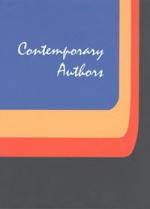|
This section contains 347 words (approx. 2 pages at 300 words per page) |
In 1939, German scientists bombarded uranium-235 with neutrons. The atom split, releasing three new neutrons. The results were noted by other nuclear physicists all over the world, who recognized that if you put one neutron in and got three neutrons out (each of which could hit other uranium atoms), that the reaction could proceed geometrically--multiplying every time a neutron hit a uranium atom--with weapons potential. American scientists wrote a letter to President Roosevelt, signed by Albert Einstein as their spokesman, saying that "...the element uranium may be turned into a new and important source of energy in the immediate future...This new phenomenon would also lead to the construction of bombs..."
Roosevelt appointed Enrico Fermi, a Nobel Prize winner who came to the United States as fascism rose in Italy, as leader of the Manhattan Project. The name for the project was taken from the location of the office of Colonel James C. Marshall, who was selected by the U.S. Army Corps of Engineers to build and run the bomb's production facilities. (When the project was activated by the U.S. War Department in June 1942, it came under the direction of Colonel Leslie R. Groves.) The project's scientific research was conducted at the University of Chicago. In a squash court under Stagg Field, Fermi's team constructed a 20-foot cube of graphite embedded with uranium--the first nuclear pile. On December 2, 1942, ten cadmium rods (neutron absorbers) were removed from the pile. As the last rod was slowly removed, radiation detectors showed a chain reaction.
In Oak Ridge, Tennessee, gaseous diffusion of uranium hexafluoride was conducted in order to separate the fissionable U-235 from the more abundant U-238. In Hanford, Washington, plutonium-239 was produced from uranium-239. In Los Alamos, New Mexico, the uranium bomb was designed and assembled. On July 16, 1945, a test bomb was exploded over the sand flats at Alamogordo, New Mexido. A second bomb was dropped on Hiroshima, Japan, on August 6, 1945. The third and last bomb produced during this time devastated Nagasaki, Japan, three days later and signaled the end of World War II.
|
This section contains 347 words (approx. 2 pages at 300 words per page) |


